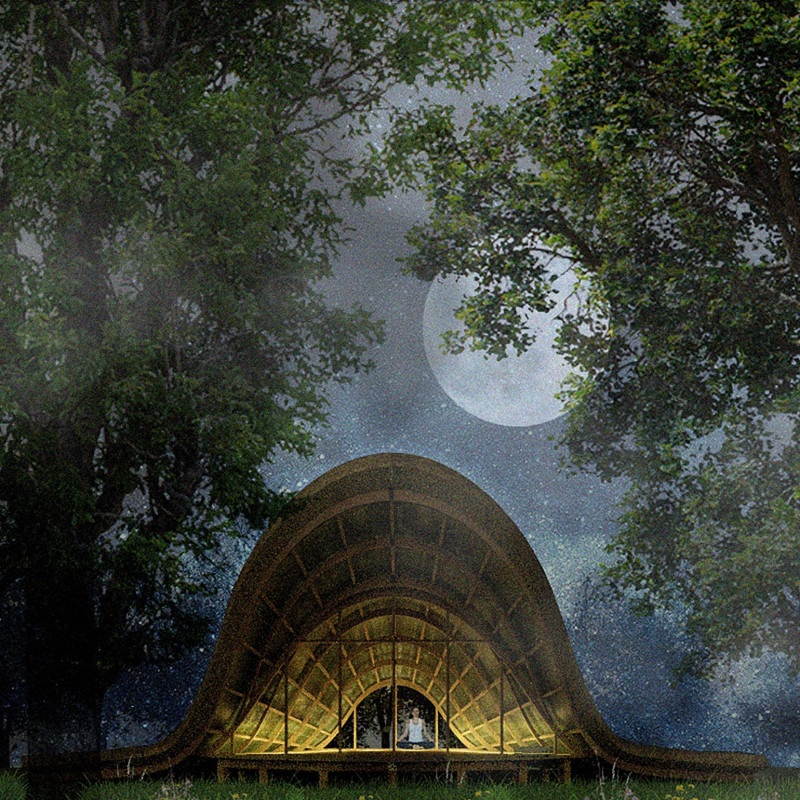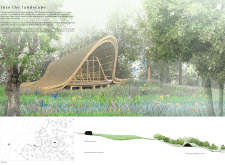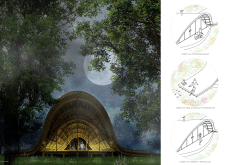5 key facts about this project
The meditation cabin at Earth Energies Sanctuary is designed to blend with its natural environment. It sits in a quiet clearing among native trees and is located downhill from the main residence. The cabin serves as a space for small groups to practice meditation and connect with nature. The design focuses on harmony with the landscape, creating a peaceful atmosphere ideal for reflection.
Integration with the Landscape
The cabin’s shape reflects the gentle curves of the nearby hills. This connection to the landscape enhances the visual flow of the surroundings. The placement of the cabin within the clearing offers privacy while allowing nature to be an integral part of the experience.
Functional Layout
Inside the cabin, there is space for four guests and a teacher, supporting different styles of meditation. The design accommodates various arrangements, whether people prefer to sit or lie down during sessions. The cabin also provides an outdoor area for meditation and for preparing flower essences, inviting users to enjoy the fresh air and surrounding scenery.
Material Choices
Sustainability is important in the choice of materials for the cabin. Timber is used for both structure and finish, ensuring that the cabin feels connected to its natural location. Cork serves as insulation while supporting eco-friendly practices. The thatched roof adds character and helps protect against the weather.
Construction Methodology
The approach to building the cabin emphasizes efficiency and simplicity. Materials are sourced locally, which reduces transportation impacts. The structure consists of two frames made from straight and curved beams. This design not only provides strength but also contributes to the overall look and feel of the cabin.
The wooden altar for flower essence preparation includes carefully designed indents for bowls, allowing for both indoor and outdoor use. This detail enhances the usability of the cabin, making it a well-thought-out space for meditation and connection with nature.






















































